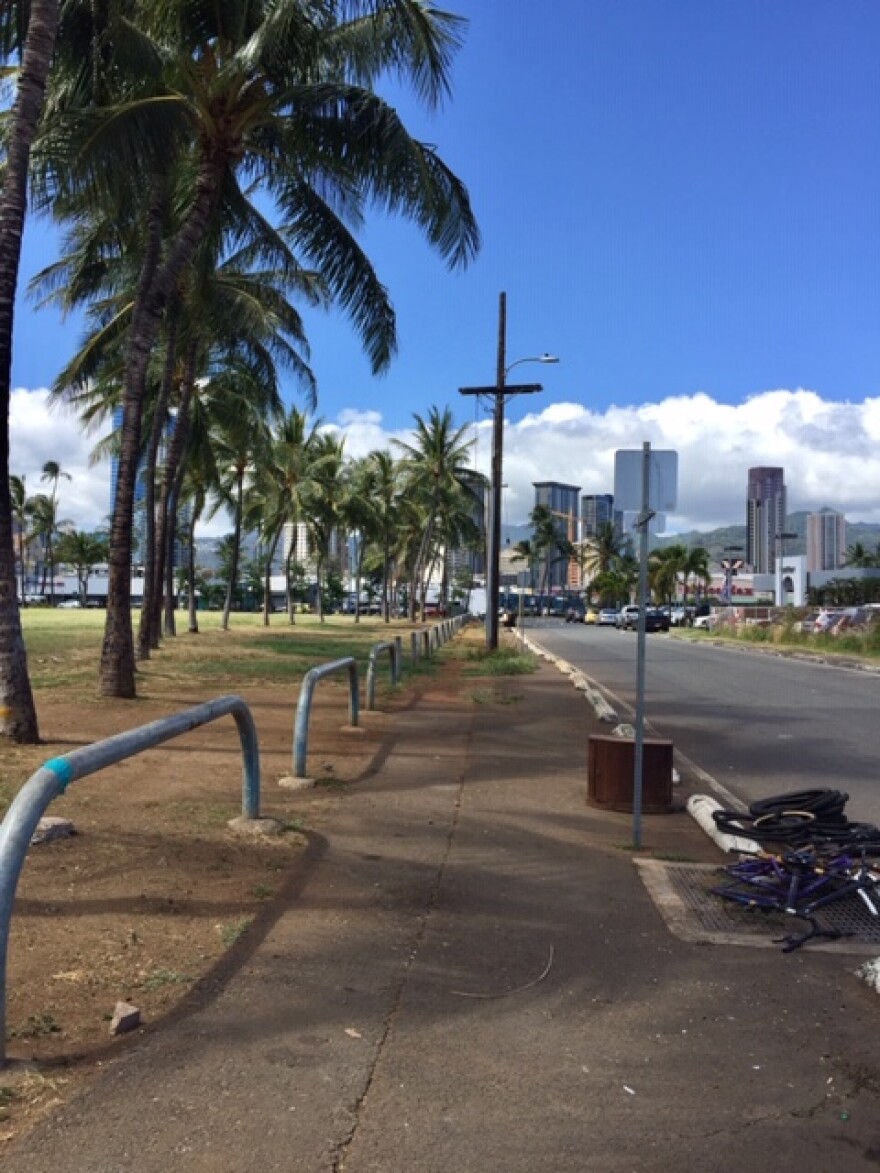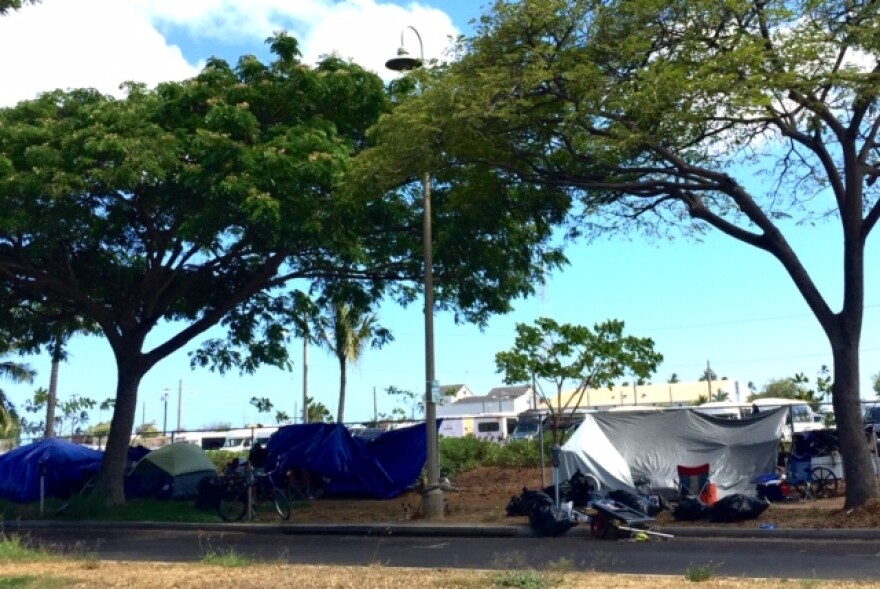Despite concerns, last Saturday’s Keiki Swap Meet at the Children’s Discovery Center went off without a hitch, the Center says, right in a park known for homeless activity. Homeless residents in the area have begun holding weekly cleanups, attending Neighborhood Board meetings, and reaching out to the Center, and others. Here, meet Aura Reyes, a leader of Ka Po‘e o Kaka‘ako, a hui working toward a permanent community shelter arrangement.

Aura Reyes was a certified nurse’s aide, working as a psych tech since 1998. She also worked for TSA, doing both jobs for years after losing her home.

“You would think, you’re working two jobs, you get paid good money, what’s your problem? But I’m always a paycheck behind on everything. This bill is due the tenth, I don’t get paid til the 11th, so you gotta borrow the money, pay interest on that. Oh man.”
While Reyes worked, her husband minded the four kids, ranging in age from 13 to diapers, one with special needs. The oldest child started having problems in school, they had school conferences, in addition to after- school activities to get each kid to, Aura had the two jobs, and in addition, they had mandatory counseling appointments with a social service agency. Then the rent went up, from $1100 to $1500 a month.
“Before I actually became homeless, I called all these places up, they’re like, Sorry, we can only help you if you’re homeless. What if I’m trying not to be homeless? Really? I have to lose everything before you can help me?”
Reyes says, by the time you’re on the street, everyone and everything you believed in has failed.
“You’re down to nothing now, because you’ve spent all your savings, all your money trying to keep the place that you just now lost.”
Reyes says she and her husband were determined to stay together, and that prevented their entry into many shelters. Their children were later taken away by a social service agency.
“After they took the kids, it was like my life was over. Everything in my life revolved around my kids.”
Reyes says, in state jobs, service jobs, construction, inside the high rises and upscale activities available just blocks away in Honolulu's go-go developing waterfront, homeless are there.

“We was with you! Some of us still work next to you people, just you don’t know they’re homeless. Ah, I used to work with her, what, she’s homeless?!? What?!? Everything changes. Everybody turns against you. The whole perception how people look at you changes, how they treat you changes."
According to Aura, and according to the Beaches and Sandovals, formerly homeless I met on Maui, the worst thing, the worst aspect of being homeless is becoming an outcast. As members of the public, we know how it feels to be afraid, perhaps, of the homeless, to feel cautious? Not wanting to embarrass them? These days, many see the homeless and seethe.
“It hurts," says Reyes. "It already hurts to be here and then to be accused of things you’re not doing or to try and follow the law only for them to make another law so that you’re now breaking the law. You know what I mean?”

“Plenty of people are like, oh my God, I’ve never gotten a ticket before in my life until I came out here." Reyes says people who end up on the street are in shock. "Oh God, I had to go sit in jail! And for them sitting in jail one night was the most traumatic experience ever, worse than being homeless. They just break down and lose it. And it’s like, Well, if I’m a criminal already..."
Reyes filed a request for emergency family housing with HUD in 2011 as they were losing their home. After seven years on the street, her emergency housing was granted.
Reyes spends most of her time still, in Kaka‘ako, helping people connect with supplies and with each other. It’s the only security you have, she says.
What is it really like, making your bed on a strip of cement in Honolulu? We’ll learn more and meet another member of Ka Po‘e o Kaka‘ako, next.




